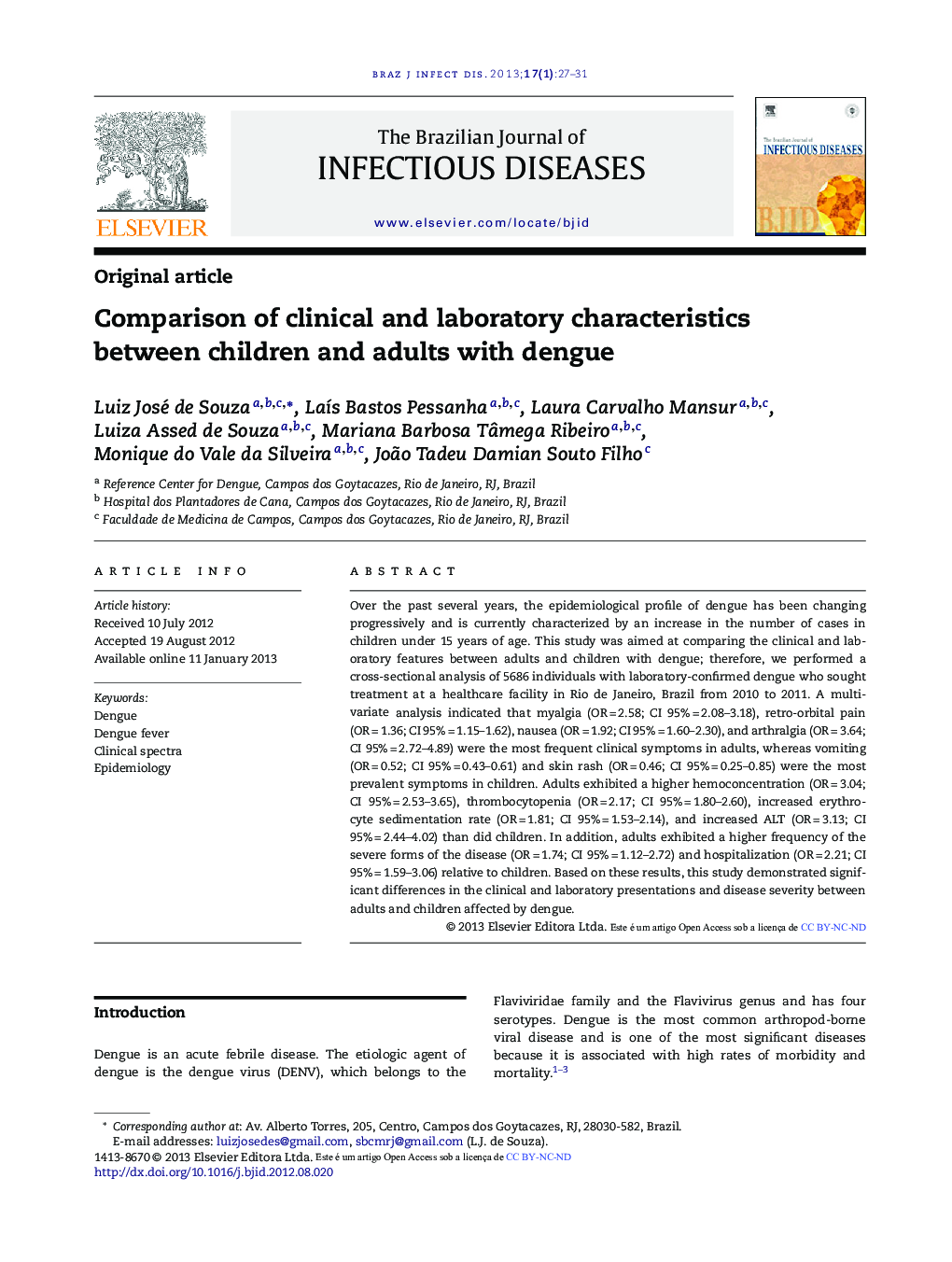| Article ID | Journal | Published Year | Pages | File Type |
|---|---|---|---|---|
| 3344171 | The Brazilian Journal of Infectious Diseases | 2013 | 5 Pages |
Over the past several years, the epidemiological profile of dengue has been changing progressively and is currently characterized by an increase in the number of cases in children under 15 years of age. This study was aimed at comparing the clinical and laboratory features between adults and children with dengue; therefore, we performed a cross-sectional analysis of 5686 individuals with laboratory-confirmed dengue who sought treatment at a healthcare facility in Rio de Janeiro, Brazil from 2010 to 2011. A multivariate analysis indicated that myalgia (OR = 2.58; CI 95% = 2.08–3.18), retro-orbital pain (OR = 1.36; CI 95% = 1.15–1.62), nausea (OR = 1.92; CI 95% = 1.60–2.30), and arthralgia (OR = 3.64; CI 95% = 2.72–4.89) were the most frequent clinical symptoms in adults, whereas vomiting (OR = 0.52; CI 95% = 0.43–0.61) and skin rash (OR = 0.46; CI 95% = 0.25–0.85) were the most prevalent symptoms in children. Adults exhibited a higher hemoconcentration (OR = 3.04; CI 95% = 2.53–3.65), thrombocytopenia (OR = 2.17; CI 95% = 1.80–2.60), increased erythrocyte sedimentation rate (OR = 1.81; CI 95% = 1.53–2.14), and increased ALT (OR = 3.13; CI 95% = 2.44–4.02) than did children. In addition, adults exhibited a higher frequency of the severe forms of the disease (OR = 1.74; CI 95% = 1.12–2.72) and hospitalization (OR = 2.21; CI 95% = 1.59–3.06) relative to children. Based on these results, this study demonstrated significant differences in the clinical and laboratory presentations and disease severity between adults and children affected by dengue.
